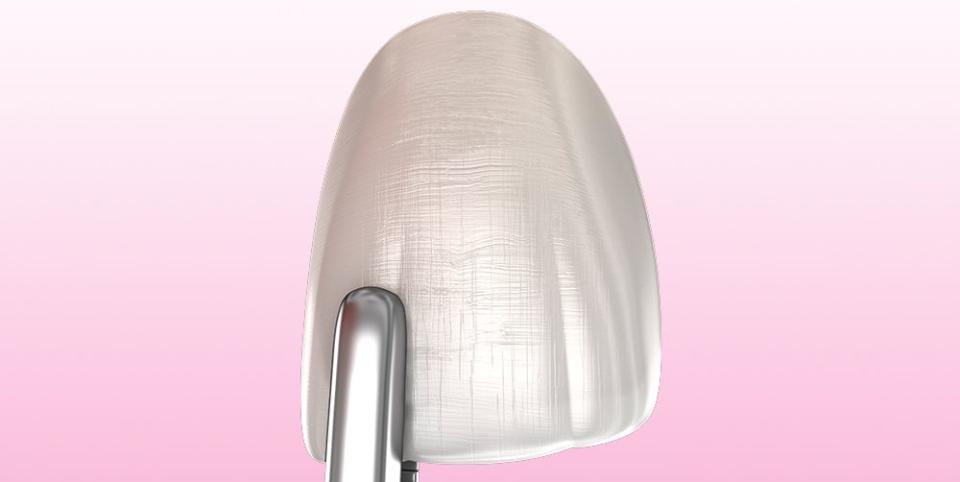Getting Veneers Isn't as Expensive (or as Terrifying) as You'd Think


Grooming is a world filled with jargon, technicalities and insider knowledge – some of it true, a lot of it bluster. That's where the Grooming Glossary comes in: a brand new series that drops the science on the world of skincare and haircare so you can self-care better – and with the know-how to separate the wheat from the chai-infused anti-aging miracle potion. This week, veneers: what you think they are, and why you thought wrong.
Twitter likes to revisit the artefacts of Noughties culture past: Sonya of Eastenders fame playing the French horn, improperly vetted Big Brother stars having a meltdown, photos of a young Adele chinning a pint. Those days are over. But it was a recent picture of a Noughties dauphine that set the Twitterverse alight. There sat Katie Price, TV personality and remarkably keen equestrian, in the dentist's chair, grinning, ready for a veneer replacement. It was horrible, wasn't it? A former glamour model momentarily transformed into Gollum-in-Gran-Canaria, all sun tan and gleaming white Rice Krispies instead of teeth, little nubs jutting angrily from barbie pink flesh. Critics were united: if a Hollywood smile meant the total annihilation of your natural one, then this just wasn't worth it.
Halloween costume idea this year. Katie Price’s teeth. pic.twitter.com/3IUDE53zgJ
— James Hall (@justjameshall) October 22, 2020
Except this is not standard practice. For years, rumour had it that the pearly white grins of Beautiful People™ involved a major filing down of the teeth to make room for a brand new set, but this is a simple mix-up of dental parlance. "She's had crowns, not veneers. A veneer covers the front portion of the tooth, whereas a crown covers the entire portion of the tooth," says Dr Amy-Rose Anfilogoff, a Brighton-based dentist that specialises in aesthetic procedures. What's more, the Real Pricey's unreal teeth are a relic of old-fashioned techniques. "In other countries – and especially back in the day – dentists would just crown teeth, but in modern dentistry, we try to veneer. It's a legal obligation. If a patient came to me and asked for a nice looking smile, and I crowned them, I'd get sued. You don't need such an invasive treatment."
It's not a one size fits all. Instead, there are two different ways to artificially improve the appearance of your teeth – and neither are as extreme as crowns. The simper, easier method is a composite veneer. "Some people know composite as the white material used in fillings, but with a veneer, we apply the same resin directly onto the tooth, and this is known as a composite build-up," says Anfilogoff. "It's basically a thin layer that covers the front portion of the tooth in whatever colour suits best. So, you can go lighter, and you can shape the teeth to the patient's request." Better yet, it's convenient. Depending upon an initial assessment, composite veneers can be done there and then right in the dentist's chair. No messing about. And, at an average cost of around £200 per tooth, it's not a dizzying amount in comparison to other cosmetic procedures.
Go porcelain however, and you can expect a longer procedure – and an added expense. "A porcelain veneer involves a very thin layer that is used to cover the front layer of your tooth. It sometimes goes onto the back, but usually, it's just the front part," says Anfilogoff. And, though there may be slight tooth removal, it's nothing compared to crowns. "Sometimes, we need to shave down a very small amount of tooth to allow it to sit properly without looking bulky." This is a last port of call though, says Anfilogoff. "Nowadays, we want to remove as little tooth surface as possible. Not only does it bond better to the outer layer of the tooth, but removing surface is irreversible – you can't grow it back. As dentists, we want to prevent any lose and preserve as much as we can."
As the bigger procedure, porcelain veneers can start from around £800. and that can soon add up when five or more teeth are undergoing treatment. That said, Anfilogoff routinely comes back to composite: the more affordable option, she says, and a lighter step into the world of dental aesthetics. The downsides are also few. "They last for around five to seven years, and only need a polish as the margins –the part where the veneer meets the tooth – can stain. Porcelain veneers last longer, but you've the same issue of staining, and sometimes, they can even chip. It's much easier to repair a composite veneer, because you can just do it in the chair, you've got the material there to hand."
Which is a relatively minor process for a major face change. No shaving down. No coughing up a few grand for a brand new seat in a decade. Indeed, like all areas of modern medicine, dentistry is continually modernising. 'Cry Me A River' is not number one. It is not 2003. You can get a brand new smile with ease, and, thankfully, keep your original set in the process.
Like this article? Sign up to our newsletter to get more delivered straight to your inbox
Need some positivity right now? Subscribe to Esquire now for a hit of style, fitness, culture and advice from the experts
You Might Also Like

